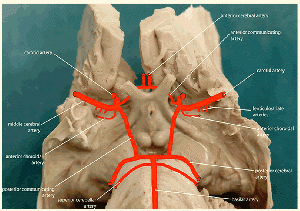Purpose
The Chedoke Arm and Hand Activity Inventory (CAHAI) is used to assess functional ability of the paretic arm and hand.[1]
See also: Chedoke-McMaster Stroke Assessment
Intended Population
- Upper Extremity Paralysis
- Stroke (inpatient and outpatient)
Method of Use[1]
The CAHAI is a performance test using functional items. It is not designed to measure the client’s ability to complete the task using only their unaffected hand, but rather to encourage bilateral function.
This test consists of 13 functional tasks:
- open a jar of coffee
- call 911
- draw a line with a ruler
- put toothpaste on a toothbrush
- cut medium consistency putty
- pour a glass of water
- wring out a washcloth
- clean a pair of eyeglasses
- zip up a zipper
- botton up 5 buttons
- dry back with a towel
- place a container on a table
- carry a bag up the stairs
There are 4 versions of CAHAI (CAHAI-7, -8, -9, and -13), all having good psychometric properties. Administration times vary with the selected version, approximately 15-30 minutes.
Equipment required:
- Jar of coffee
- Phone
- Ruler and pen
- Toothpaste and toothbrush
- Knife
- Fork
- Putty
- Glass of water
- Wet washcloth
- Eyeglasses
- Jacket and zipper
- Shirt with 5 buttons
- Towel
- Rubbermaid 38 liter container (50x37x27cm) with 10 lb. weight
- Plastic gorcery bag with 4 lb. weight
Evidence
Reliability:
Excellent interrater/intrarater reliability for stroke (ICC ranging from 0.96 – 0.99)[4] and upper extremity paralysis (ICC = 0.98)[5]
Validity:
Not established
Responsiveness:
Not established
Perceived clinical utility:
Good results as an upper limb ability assessment for clients within 14 days of stroke.[6]
Resources
www.cahai.ca
References
- ↑ 1.01.1 Barreca, S., Gowland, C. K., et al. (2004). “Development of the Chedoke Arm and Hand Activity Inventory: theoretical constructs, item generation, and selection.” Top Stroke Rehabil 11(4): 31-42.
- ↑ Jennifer Courtney. Chedoke Arm and Hand Assessment Inventory. Available from: ↑ coginicole. Chedoke Arm and Hand Activity Evaluation. Available from: ↑ Schuster, C., Hahn, S. & Ettlin, T. (2010). Objectively-assessed outcome measures: a translation and cross-cultural adaptation procedure applied to the Chedoke McMaster Arm and Hand Activity Inventory (CAHAI). BMC Medical Research Methodology, 10, 106.
- ↑ Barreca, S. R., Stratford, P. W., et al. (2005). “Test-retest reliability, validity, and sensitivity of the Chedoke arm and hand activity inventory: a new measure of upper-limb function for survivors of stroke.” Arch Phys Med Rehabil 86(8): 1616-1622.
- ↑ Rowland TJ, Turpin M, Gustafsson L, Henderson RD, Read SJ. Chedoke Arm and Hand Activity Inventory-9 (CAHAI-9): perceived clinical utility within 14 days of stroke. Top Stroke Rehabil. 2011;18(4):382-93

